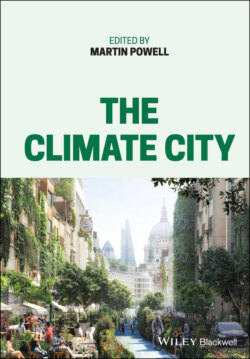Читать книгу The Climate City - Группа авторов - Страница 54
3
The Emerging City
ОглавлениеAustin Williams
This chapter is a snapshot of the emergent urban conditions in China and Africa and an attempt to understanding how cities reflect their historical socioeconomic national conditions, using urban examples from the Sub-Saharan African continent and also from east Asia. It is an exploration, in microcosm, of wider concerns and constraints on urban discourse, generalized over two continents to try to understand how particular responses to environmental and developmental issues are generated. It also explores how those responses are often not the result of free choice, democratic engagement, or sovereign will.
Malawi is a landlocked country bordered by Mozambique, Zambia, and Tanzania, with a border alongside and across Lake Malawi, one of Africa’s Great Lakes. The region was arguably first brought to global attention by David Livingstone’s missionary adventures up the Zambesi river in the mid-nineteenth century, an expedition that was intended to bring trade and Scottish Presbyterianism to remote regions in central Africa. As a consequence of this imperial adventure,1 large swathes of land became part of Britain’s colonial spoils: the nascent country of Malawi initially fell under British Protectorate status in various guises (including Nyasaland, tied to northern Rhodesia), and finally gained independence in 1964 under the government of President Hastings Banda.
Approximately 9,000 km northeast of Malawi’s national capital Lilongwe lies the vast land mass of China, the most populous nation on earth. China is second only to the USA in national net worth, is over 60% urbanized, and – until coronavirus – was the fastest growing major economy in the world. This industrial, commercial, economic, and urban “growth miracle”2 has occurred within one’s lifetime, transforming the perspectives, lifestyles, and life chances of Chinese people within a generation. Its economy grew at an average rate of 10% since Deng Xiaoping initiated market reforms in 1978. One of its territories – Hong Kong Special Administrative Region – has just 1% of Malawi’s land area but creates a GDP that is 2,500% larger.
These two wildly diverse locations, histories, and economies, one in east Africa, one in east Asia, are united by the “fact” that neither of them is officially classified as a “developed” country. This anomaly is primarily because their GDP per capita falls below the internationally recognized benchmark for developed economic status. Malawi is clearly one of the most underdeveloped nations on Earth, while the economic behemoth of China is classified as a “developing” nation even though China’s GDP is likely to rival America in the coming decade. Its “developing” status is due to the fact that its GDP share per head of population is still woefully low at around 15% of that of the USA. Partly because of its vast population, China’s GDP per head is US$9,700 (compared to US$62,970 per person in the USA). Malawi’s GDP languishes at around US$390 per person.
When President Xi Jinping came to power in 2012, he promised that China would become a “moderately well-off society” by 2021. That date coincides with the 100th anniversary of the formation of the Chinese Communist Party, and so there is a lot of political credibility riding on its realization. For almost 40 years, China experienced double-digit growth year on year, while Malawi’s growth potential in 2017 was estimated at around 3.7–4.4% and from a much weaker base.
Since 1980, China’s urban population has risen from 11% to over 60% (with the number of Chinese cities rising from 193 to the current level of 653).3 Malawi’s urban population was 11% in 1990,4 rising to 17% today.5 The disparities are not always straightforward, and even though Malawi also has 17.5 million of its population living on less than US$5.50 a day, China has 373 million in the same situation (albeit Malawian poverty represents 97% of the population compared to 26% of the entire Chinese population6).
Neither China-watchers nor financial specialists predicted the destabilizing effects of COVID-19 and the ultimate impact of a global pandemic on economies large and small. The consequences are yet to be revealed (and hence outside the scope of this contribution), so this chapter is intended merely to explore the generalized relationship of development and sustainable development using historical precedent. Through the prism of urbanization, this chapter compares two significantly differing countries – Malawi and China – and their communalities and differences, ambitions and challenges.
We will explore how Malawi, among many other African states, is still in hock to supranational finance and how any escape from subjugation needs to overcome environmental constraints. We will cast an eye over the dynamic shift in the direction of trade to see whether it is changing the terms of the debate. And we will look at the various historic and contemporary forces holding back – or in China’s case, liberating – development.
